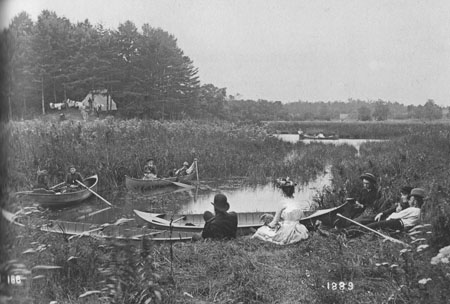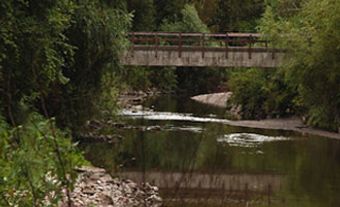This content is from a series created in partnership with Museum Services of the City of Toronto and Heritage Toronto. We gratefully acknowledge funding from the Ontario Ministry of Tourism, Culture and Sport, and the Department of Canadian Heritage.
Toronto Feature: Mimico Creek
"Mimico Creek: A Former Squatters' Paradise"
Bill Bonar and his wife Letitia, Irish immigrants who arrived in Toronto in 1916, were allowed to live rent-free in a former pump house located on the west side of Mimico Creek, near a beautiful marsh just south of the confluence with what is now called Bonar Creek. The land had once belonged to Sir Henry Pellatt of Casa Loma fame, who lost the property when he could not pay his taxes in the 1920s.
Until the 1940s, before the introduction of foreign species killed much of the fish stock in Lake Ontario, Bonar was able to earn his living as a fisher. When he died in 1964, three generations of the family had squatted on the property thanks to the generosity of several owners.
Mimico Creek begins in Brampton and travels in a southeasterly direction to drain into Lake Ontario, west of the Humber River. Its watershed is located between the Humber and Etobicoke Creek. Like so many of Toronto's waterways, most of Mimico Creek has ended up enclosed by sewer or concrete spillway. However, south of Bloor Street, near the Islington subway station, it is still exposed. It passes by Montgomery's Inn and its former beauty can be experienced to the south in Humber Bay Park, where the mouth of the creek is crossed by a very striking pedestrian bridge designed by Santiago Calatrava.

 Partager sur Facebook
Partager sur Facebook Partager sur X
Partager sur X Partager par Email
Partager par Email Partager sur Google Classroom
Partager sur Google Classroom






